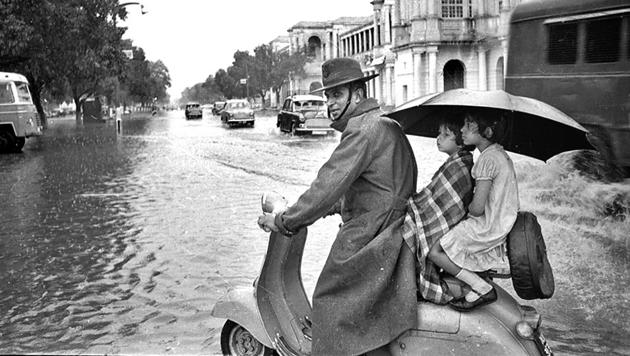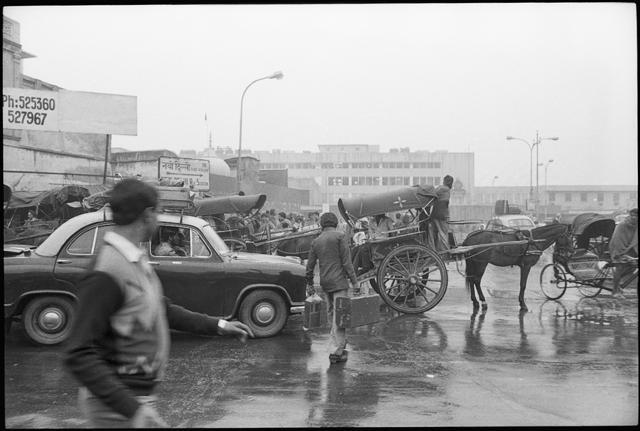When monsoon was a festival in Delhi
For Delhiites, monsoon used to be the time for picnic, family get-togethers, cultural evenings, savouring the special rain delicacies such as andarsas, mangoes. Historian Sohail Hashmi, author Mridula Garg and famous TV personality Shammi Narang share their experiences.
As soon as rain drops would touch the ground, filling the city’s air with the infectious smell of the soil, sweet meat shops in Old Delhi would start frying fresh ‘andarsas’, attracting customers of all ages and hues. It was the time for celebration, picnics, swings, songs and feast.

It was the time when Delhi had a monsoon culture. It was the time when people would wait for the rain for not just getting rid of the torrid Delhi heat. It was the time when people did not associate monsoon with just waterlogging, potholes and traffic jams.
In the ’80s and early ‘90s, the city used to welcome rain and used to soak in the spirit of monsoon festivity.
Old timers reminisce that rains were the best time to explore the city and its serene landscape.
Mridula Garg, renowned author, says people would go to the Walled city area to relish a host of savouries such as bedmi pooris and jalebis. Evening baithaks (cultural get-togethers) were also organised, she says.
Sohail Hashmi, writer, filmmaker, and history buff, says during this time of the year, city dwellers would set out on family outings to mango orchards on the outskirts near Mehrauli, exactly where the Chhattarpur Metro Station is located now.
“These mango orchards were set up by the grandfather of the last Mughal emperor Bahadur Shah Zafar. There used to be two villages — Amrayyian and Andheria. Families would stuff themselves in tongas with home-cooked food and head to mango orchards where they would spend the whole day enjoying the weather,” Hashmi says.
Amrayyian village does not exist now and Andheria is now known for its plush farmhouses where luxurious wedding are organised. Andheria Mor is one of the major and busy intersections today for those travelling between Delhi and Gurgaon.
There used to be shops along the road in Andheria village, which were demolished around the Emergency.

“When the Delhi Development Authority (DDA) started taking over land in the city in 1960s, farmhouses were carved out in these villages. Consequently, mango orchards vanished and so did the culture associated with them with the onset of urbanization around 70s,” says Hashmi.
Monuments in and around New Delhi such as Lodi Garden, India Gate lawn, Purana Qila used to turn picnic spots where people from across the city would gather and get drenched in the rain. Some other popular monuments were Qutub Minar, Hauz Khas village, Yamuna bank near Okhla village, and Firoz Shah Kotla.
There were huts in Deer Park in Hauz Khas, where families would cook and stay till sunset. This is not permitted any more and the DDA plans to convert these huts into museums.
“Women used to set up swings on trees and play. Hari mirch-keemey ka salan with Besani paranthe used to be the speciality of the season after which we would feast upon freshly plucked mangoes. Around the season, when Purvaiya (easterly wind) wind started, a regatta was organised by the Delhi Boat Club on the river bank near Okhla Water Works,” says Hashmi.
Garg, a recipient of Sahitya Akademi award, says that the Sangeet Natak Akademi or Bharatiya Kala Parishad used to hold musical evenings and baithaks to welcome monsoon. “We lived in Bengali Market and used to visit Chandni Chowk to relish bedmi poori, gulab jamun and jalebi with family and friends when it rained,” she says.
Garg, who graduated from Miranda House College in 1957, said even teachers allowed them to leave as the weather changed. “It was different in those days. People had simpler lives. As soon as the weather turned pleasant, classes were suspended. Then, we used to head straight to Delhi University’s coffee home to relish pakoras and coffee,” she says.
Another place famous for coffee with pakoras was Indian Coffee House at Mohan Singh Place in Connaught Place, where city dwellers would also go for south Indian delicacies like Masala Dosa or Sambar-Vada.
For Shammi Narang, actor and former Doordarshan (DD) news reader, a small kiosk at Bahadur Shah Zafar (BSZ) Marg, opposite National Herald office, was the place where he enjoyed monsoon with ‘chana-bhatura’. He also remembered ‘Bille Di Hatti’ in Khanna Market, which was famous ‘chana-samosa’.
“I was a student of Andhra Society School, Rouse Avenue (now Deen Dayal Uphayay Marg). After skipping classes, we would have chana-bhatua and gulab jamun with a bottle of Coca Cola at a small shop on BSZ Marg, near the school. It would cost us Re 1 only. After that we would rush to Lodi Garden. Around somewhere in 1970s, several Bollywood films were shot there. It was a real treat to watch filmstars,” Narang says, who is also known as voice of Delhi Metro.
MS Shehrawat, advisor, public relations, New Delhi Municipal council (NDMC), says in villages, women would make seviyyan (vermicelli) in monsoon. “It was a unique custom as the season started, women in the family would prepare raw seviyyan which were consumed throughout the year,” he says.
Stay updated with all top Cities including, Bengaluru, Delhi, Mumbai and more across India. Stay informed on the latest happenings in World News along with Delhi Election 2025 and Delhi Election Result 2025 Live, New Delhi Election Result Live, Kalkaji Election Result Live at Hindustan Times.
Stay updated with all top Cities including, Bengaluru, Delhi, Mumbai and more across India. Stay informed on the latest happenings in World News along with Delhi Election 2025 and Delhi Election Result 2025 Live, New Delhi Election Result Live, Kalkaji Election Result Live at Hindustan Times.





